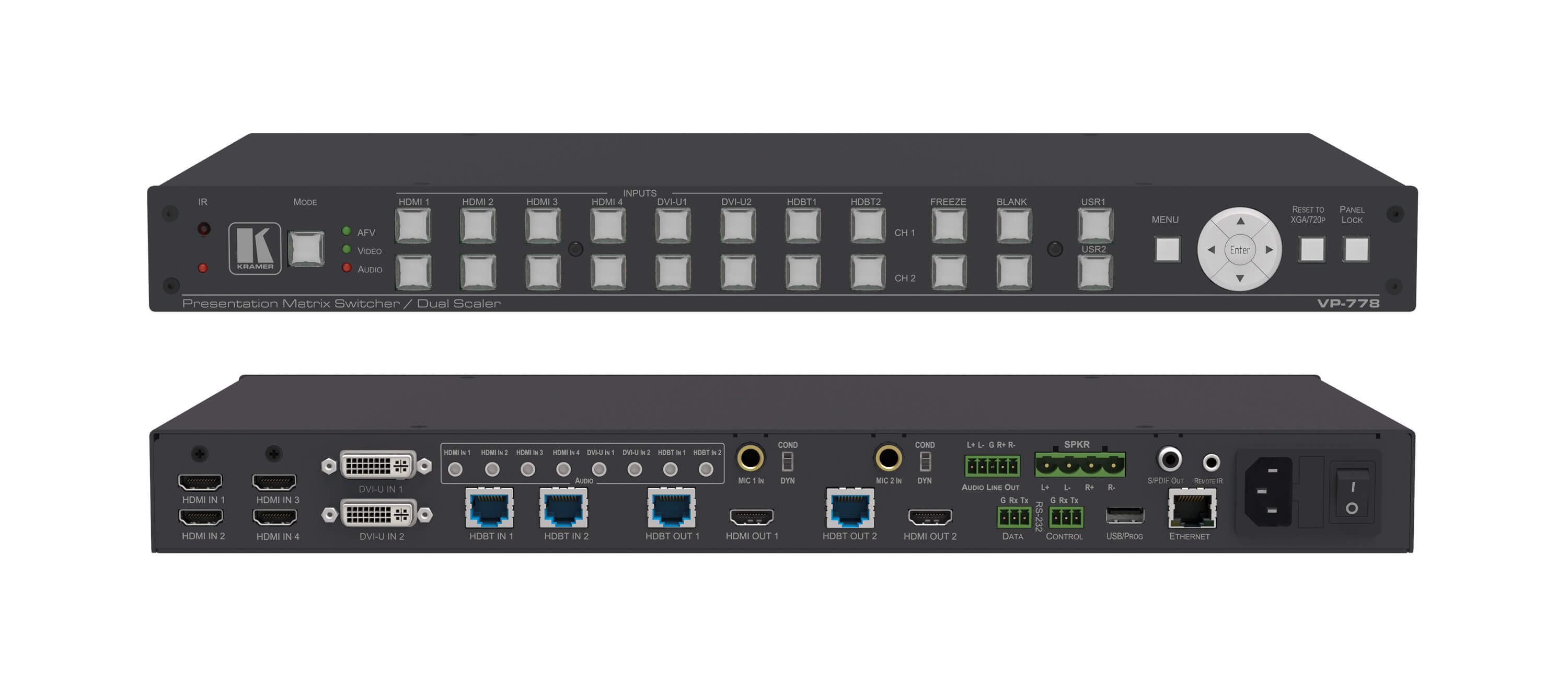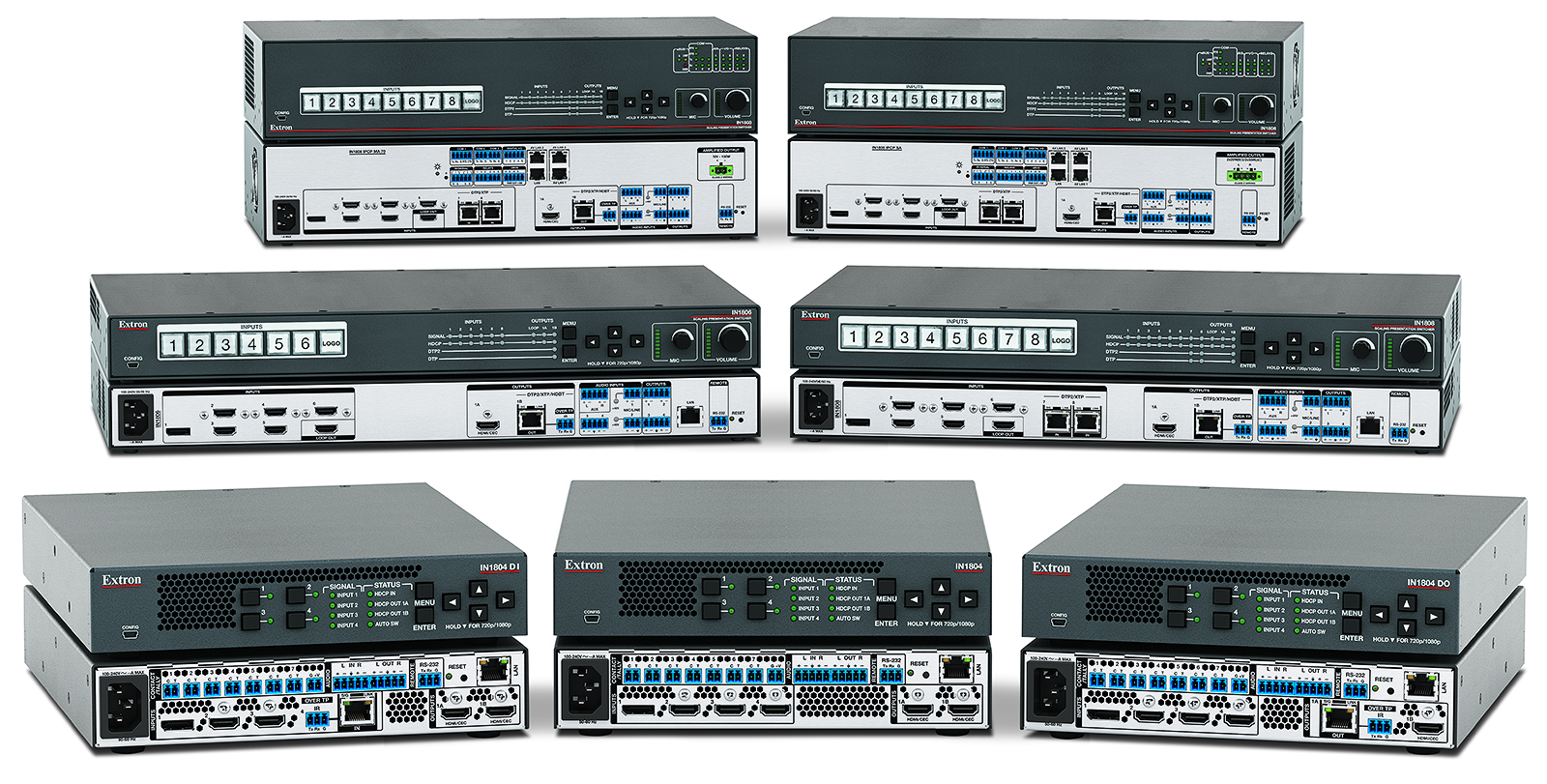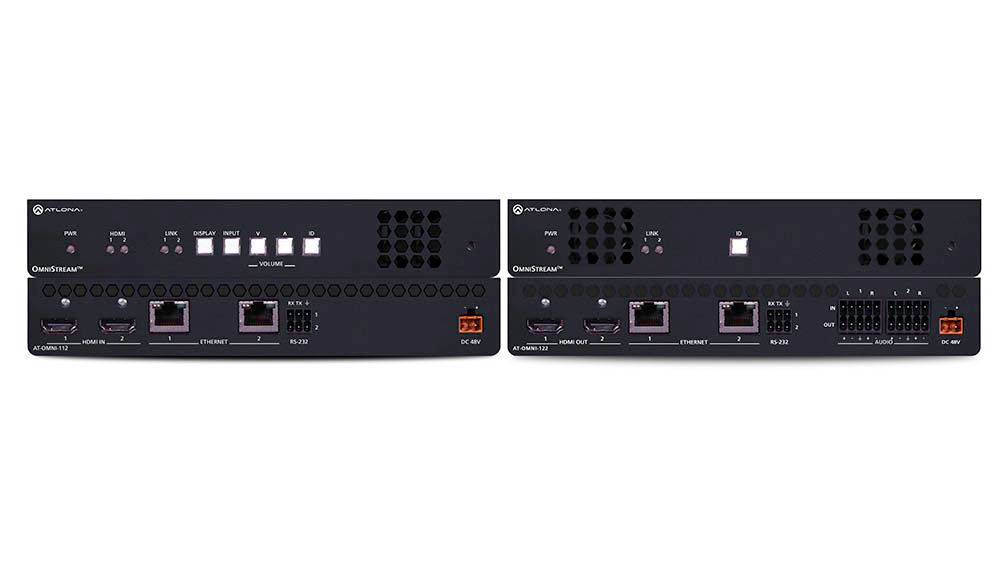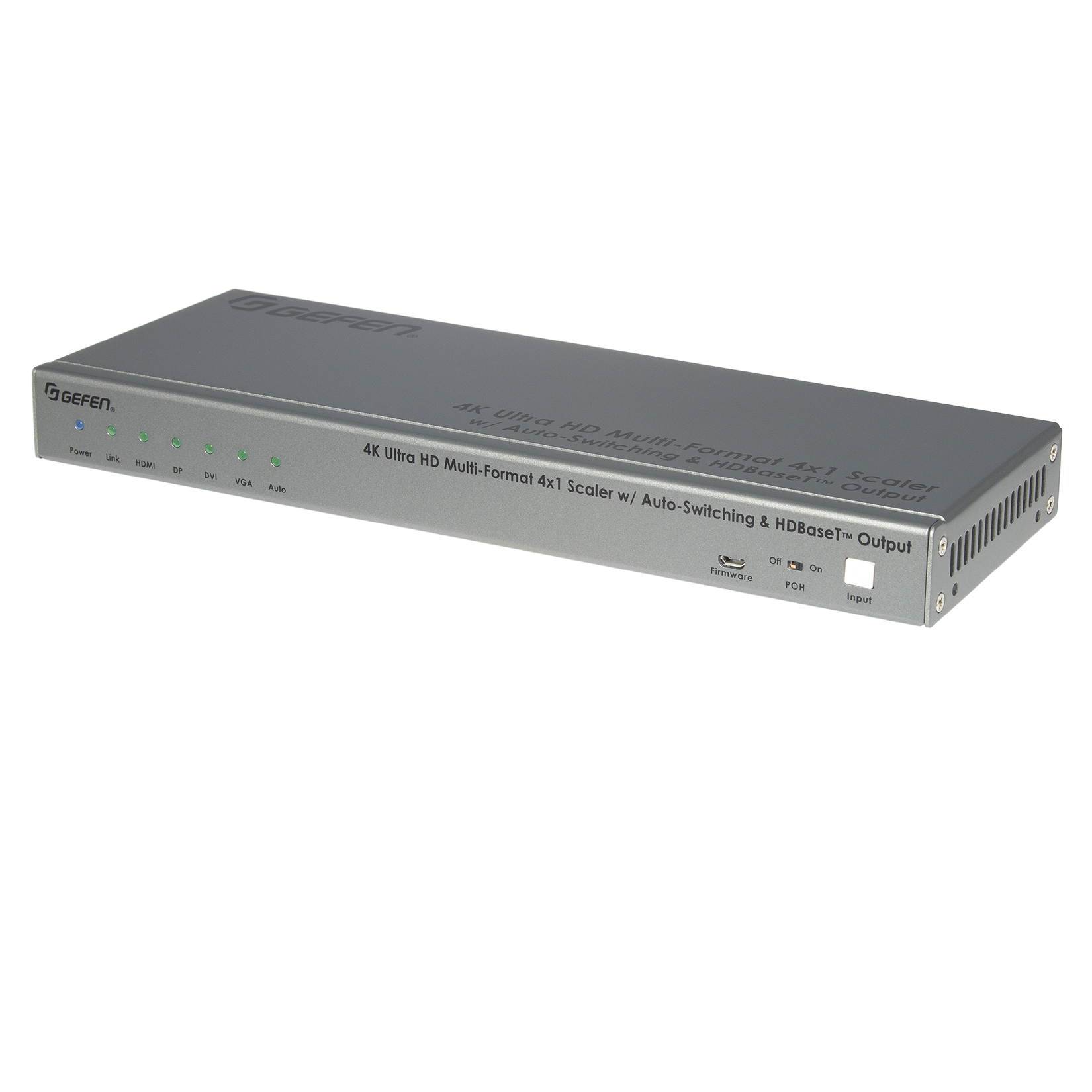Scaling Up to Expectations
The Latest Scalers Can Be Your Secret Weapon in Keeping Pace
It’s hard to beat the “wow” factor of a well-designed audiovisual experience, where vivid, impactful visuals hit the audiences in high definition at an immense scale.
The AV industry then, by definition, must continually push forward to keep pace with advancements in technology that redefine this end user experience and reset customer expectations.
Every year, the consumer and professional installation industries “ooh” and “aah” over the latest screen resolutions and pixel pitches, the largest LED walls, and comprehensive-ecosystem solutions to common needs.
But there is another essential piece of equipment to the puzzle—perhaps underappreciated—that bridges these technological divides of this rapidly evolving industry. These small, non-descript boxes, scalers and switchers, quietly blink from the gear rack while they do the heavy lifting of matching evolving formats and resolutions.

Kramer VP-778

Extron IN1800 Series

Atlona OmniStream

Gefen EXT-4K300A-MF-41-HBTLS
“Scalers offer us the ability to interface with the parent 4K sources to 1080 displays that are out there, and projectors that sometimes are not even 1080,” said David Shamir of Atlona. “People don't want to throw them away, and why should they? It's still good, it works. Scalers glue those new technologies to what already exists in the room.”
When designed and deployed well, Shamir added, scalers should provide a seamless transition without negotiations between units that increase the switching time.
“Those response times sometimes are accumulated,” he said. “You take a big organization with hundreds of conference rooms, [and it takes] four or five minutes in every conference room to just do all these adjustments of the video and zoom in, zoom out, plug in, plug out.”
A daily selection of the top stories for AV integrators, resellers and consultants. Sign up below.
Earlier this year, Atlona debuted its HDVS-SC-RX model, a 4K/UHD scaler for HDBaseT and HDMI with auto switching and an automatic display control feature that allows display control through TCP/IP or RS-232. In a conference room situation, for example, the switcher will prompt a display to power up when a presenter connects a laptop or device, then shuts off the display when the device is unplugged.
The company’s OmniStream product line provides AV over IP with latency down to eight milliseconds and the ability to extend its footprint to interactive technologies.
“All that is being managed by a state-of-the-art user interface that's enabled for the user to map any content to any quadrants of the video wall or any TV, and receive the result in a very fast manner.”
Developed to address the growing demand for 4K video support within AV systems, the Extron IN1800 series switches and scales signals up to 4K/60 with full 4:4:4 color sampling and data rate support up to 18 Gbps, as well as downscales 4K content to HD displays to integrate legacy sources.
“[Extron’s] Vector 4K scaling engine delivers the power and precision required to manage the high pixel counts of today’s 4K displays and content,” said Joe da Silva, director of product marketing, Extron.
In large installations, the IN1808 IPCP has an onboard class-D amplifier and control processor, and can function as the AV system hub—providing centralized AV switching, signal processing, audio power amplification, and system control. The product family includes nine models with four, six, or eight inputs and dual video outputs, plus integration features for a range of professional AV applications.
“End users demand network control capability for even their smallest AV systems,” said da Silva. “This enables them to troubleshoot and monitor usage remotely, ultimately optimizing their resource utilization. In response, all IN1800 products have built-in Ethernet ports to allow management over LAN.”
Gefen recently released the EXT-4K300A-MF-41-HBTLS, a 4x1 multi-format auto switcher, and plans to follow it up soon with a 5x1 version, the EXT-4K600A-MF-51. Both models include HDMI, VGA, and DisplayPort inputs, and both support a local HDMI output and an extended output with support for HDBaseT technology.
“These switchers are designed to address small- and medium-sized multi-purpose areas—such as huddle rooms and conference rooms—where different AV inputs are needed to address the devices that are brought into these spaces,” said Jason Fitzgerald, product manager, Gefen.
Both models feature auto switching, which saves time and trouble interfacing devices, while the forthcoming 5x1 version also includes a microphone input that makes it suitable for events and venues that call for P.A. support. The 5x1 also makes all inputs scalable (not just the VGA and DVI inputs, as on the 4x1).
“Scalability and ease-of-use are becoming more important than ever,” said Fitzgerald. “Advanced features that used to be relegated to larger, more expensive AV management equipment are being desired in even the smallest meeting spaces.”
As features such as auto switching and microphone compatibility find their way into price competitive and smaller form factors, he noted, their applicability also increases.
“Adding versatility from multi-format input capability and auto-switching to even the smallest meeting or collaboration space can have a huge impact on usability. Integrators are seeking to incorporate products that can do more with less user interaction [and] ultimately negate the need for complex control systems.”
The latest offering from Kramer, the VP-778, is an 8x2 scaling matrix switcher designed to accept multiple video formats that can be local to the switcher or remote through standard twisted pair cabling. The format and resolution of sources can be changed and sent to destinations that are either local through HDMI or remote through HDBaseT.
The VP-778’s dual internal scalers create seamless video transitions between source switching, from direct cuts to gentle crossfades, for live event production, houses of worship, and large-scale corporate facilities that use video switching.
Influencing and meeting customers’ high-quality production expectations can be a challenge for AV integrators operating in the video space, said Chris Kopin, vice president of technology, Kramer US.
“Everyone watches TV and gets used to the smooth video transitions of live cameras, like in a sporting event,” he said. “These smooth transitions require dual scaling and come at a price that the more simple units just can’t provide.”
Kopin also noted that as sources such as HD cameras have come down in price, it’s easier to add high-quality video to many applications than before.
“Often, the use of these cameras will require a switcher/scaler such as the VP-778 if a TV-like production quality is desired.”
As display technology continues to change at a rapid pace, scalers and switchers are becoming one of the most crucial links in the signal path. After all, the end product AV customers see is the result not only of the source, but also of the path it takes.
“Many applications are installing 4K displays whether it’s a requirement or not, since 1080p glass is becoming a thing of the past,” said Kopin. “Integrators want the ability to take the more common HD sources and scale to match the native resolution of the 4K display, ensuring the very best picture quality.”
Jim Beaugez is a freelance writer and content creator for the AV, professional audio, and music industries. His work has been published by Systems Contractor News, Pro Sound News, Mix, Radio World, and The Recording Academy, as well as Rolling Stone, Smithsonian, Guitar World, Guitar Player, and other consumer publications. He previously worked in communications for the pro audio and musical instruments industries.
